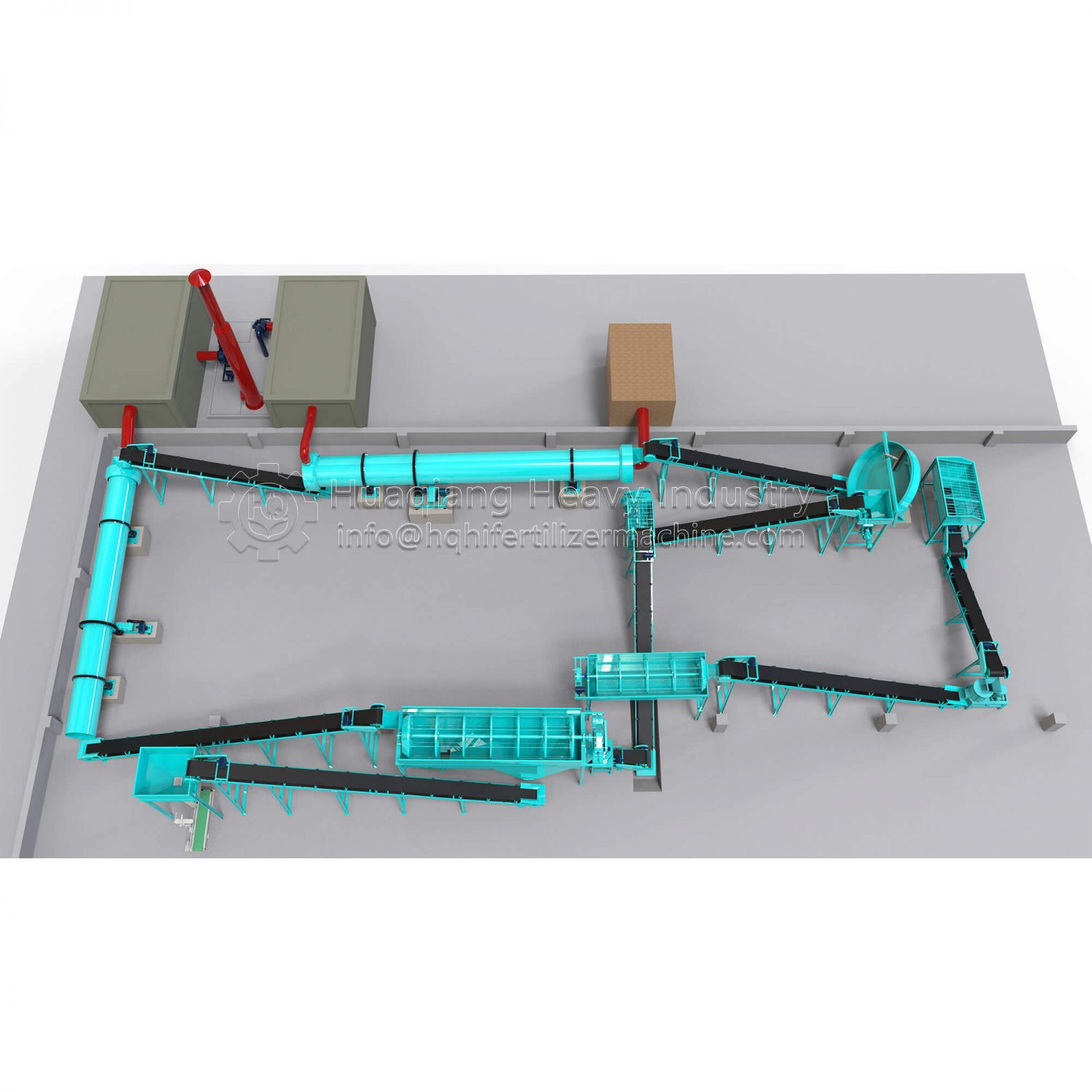Process flow and configuration of organic inorganic compound fertilizer production line
Animal manure is a relatively high-quality organic fertilizer, which contains pure nitrogen, phosphorus (P2O5), and potassium (K2O) of about 1.63%, 1.54%, and 0.085%. Livestock and poultry manure must undergo maturation with a composting agent before application, to inactivate and deodorize parasites and their eggs, as well as infectious pathogens present in livestock and poultry manure, through the process of maturation.
The process flow of the organic inorganic compound fertilizer production line: Fermented biomass is added with nitrogen, phosphorus, and potassium – the total nutrient content is not less than 25%, and organic inorganic compound fertilizer can be produced. The materials are prepared in proportion, and after being fully mixed, they are uniformly and continuously fed into the granulator by a belt conveyor for granulation. The finished particles enter the granulator for rounding and shaping, and then are dried at low temperature and high air volume (≤ 65 ℃) by a dryer before cooling, screening The finished particles are coated by a coating machine (with brightening agent and anti caking agent added), transported by a belt conveyor to the finished material warehouse, measured by a computer automatic quantitative packaging system, packaged into 40-50kg/bag finished products, stacked and stored, and finally made into round fertilizer particles. The material transportation between various equipment in the entire production process is configured with a belt conveyor and a herringbone belt according to the equipment configuration requirements, to prevent material return during the material transportation process, Adopting a groove structure to prevent material slipping..jpg)
The equipment configuration of the organic inorganic compound fertilizer production line can be selected according to its own investment situation. It can be used for granular fertilizer and powder fertilizer. Equipment selection: If you want to reduce investment costs, you can choose small-scale equipment configurations such as fermentation flippers, crushers, mixers, granulators, screening machines, packaging machines, etc. Wait until the time is ripe to expand the investment scale in the future. The main process of organic fertilizer fermentation equipment is to mix organic solid waste with a moisture content of less than 60%, auxiliary materials (such as plant straw), microbial fermentation agents, etc. evenly, and through continuous aerobic fermentation in a pool, make it fully decomposed, sterilized, deodorized, and dehydrated. The moisture content of the decomposed material is generally within the range of 30-35%. After screening and magnetic separation, it can be directly used for granulation to produce spherical organic fertilizer, or further dried to produce powdered organic fertilizer.

.jpg)

.jpg)
.jpg)

.jpg)
.jpg)
